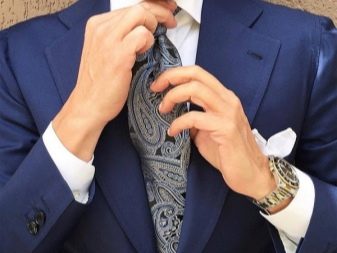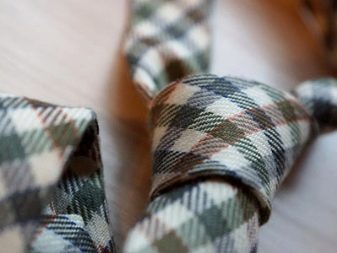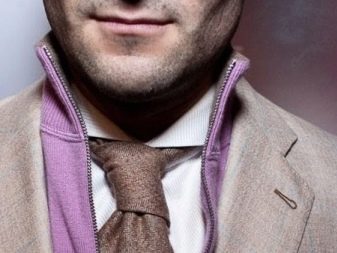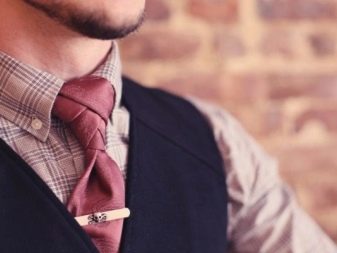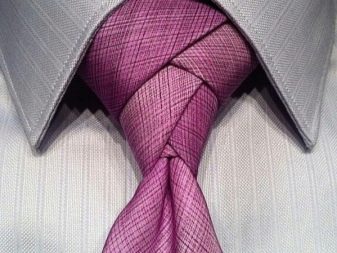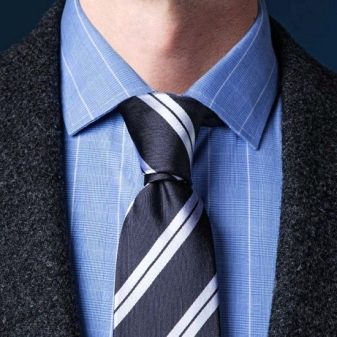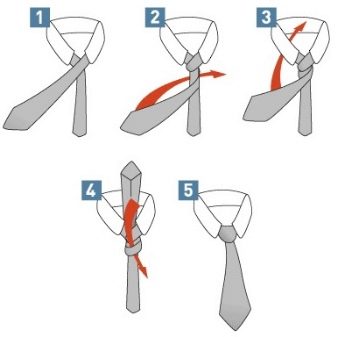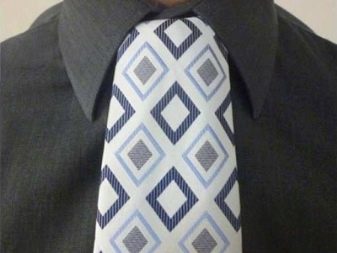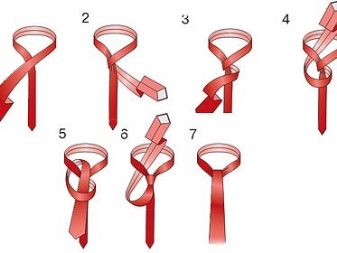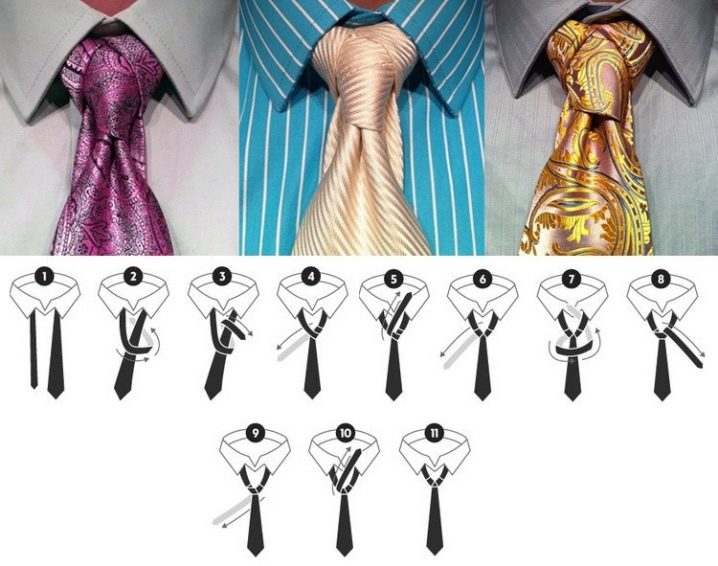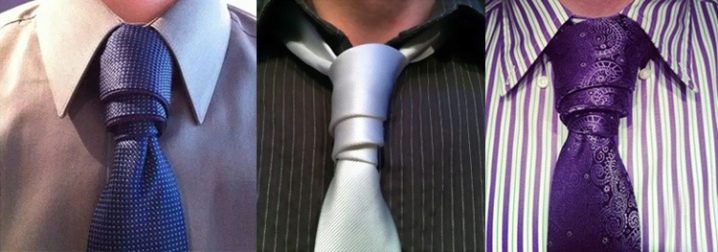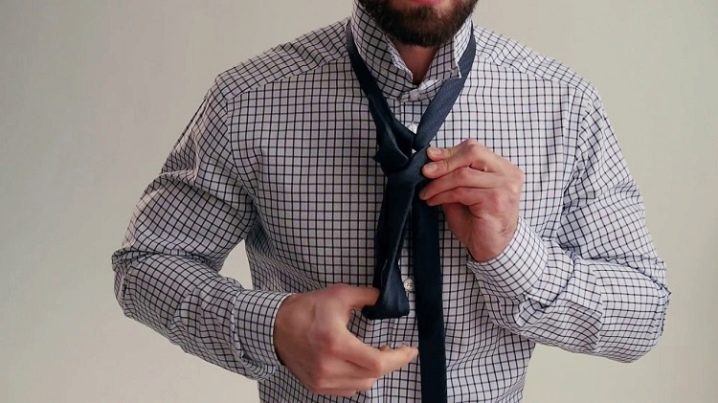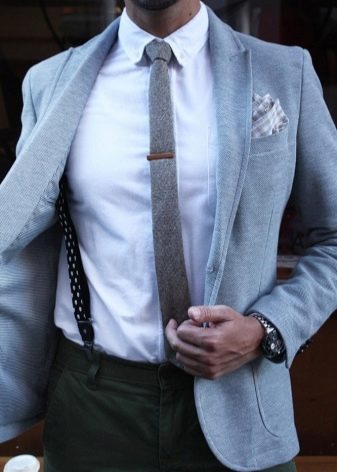How can you tie a tie? Schemes and step-by-step instructions
When it comes to men's clothing, namely classic and elegant style, the imagination usually draws the image of a man in a suit with a tie. Indeed, it is difficult to imagine male elegance without a tie - this is a well-known and seemingly uncomplicated wardrobe element.
Easy ways to tie
There are dozens of ways to tie ties. They are not used only for products that are sewn with an elastic band. Such options for ties are made for everyone (for example, for children's school uniforms), but in our article we will focus on men's ties. Before proceeding with the description of the types of tie knots, let's say a little about those aspects that you need to pay attention to when choosing a particular knot.
Be sure to consider:
- type of fabric (silk, knitted silk, silk-grenadine, knitwear, thick wool, cashmere and others);
- the thickness of the fabric of the product and its inner lining;
- the type of construction of the tie (it can be ordinary or complex, consist of 6, 7 or 11 layers);
- the length of the tie (the choice of the knot can affect how the tie will look in the end, some of them can be visually given a long or short look, the knot against the background of the tie may seem disproportionately large or, on the contrary, too small);
- the width of the shirt collar and jacket lapels;
- proportions of the addition of the body, neck and face;
- reason for putting on a tie.
Classical
This way is also called "Four" or quarter, because only 4 easy steps separate a man from turning a tie into a perfect piece of jewelry with perfect features. This knot is considered one of the most famous and easy to remember. It is done as follows:
- a man should wear a tie on the collar of his shirt, its wide side should be on the left;
- the narrow side should be approximately 2 times higher than the wide one;
- then you need to cross both halves of the tie, while the wide side should be on top;
- then the upper wide half should wrap around the narrow one once;
- and then it is necessary to bring the wide end up from the back side behind the crossed halves of the tie;
- the tip brought up is pulled through the ring that appears in the place of twisting;
- at the end of the nodal structure, a shape and a comfortable pressure force are given.
This is a simple, strict and proportional knot, suitable for men with completely different body types - both tall and broad-shouldered, as well as refined and graceful. Various ties - silk, knitted, knitted, woolen, cashmere and linen - go well with this simple knot.
The four will look decent at different events. It is appropriate almost everywhere: at official receptions, in the office, at gala banquets, in the theater, at parties. In a word, a classic.
Oblique
Oblique knot, or diagonal, It may seem complicated at first glance, but its essence is simple. Different types of neckties and fabrics go well with this knotted knit. It is performed using the following simple steps:
- we place the wide end on the left;
- narrow - about 2 times higher than wide;
- we put the wide one on top of the narrow one and circle it around it 2 times;
- we draw the wide end from the outside through the resulting knot, and then pull it out to the back side;
- then we pass the wide end through the loop in the winding and pull it down;
- the beautiful weave is ready - you just need to pull it slightly on the ends of the tie and trim it with your fingers.
Complex schemes
It would be logical to assume that the simple nodes described above are suitable for all cases. By and large, they are, but still they are more often used for a strict formal style and appropriate events. But the knots, which are complex in their execution, on the contrary, are more suitable for parties and personal friendly meetings, very harmoniously fit into an informal atmosphere.
Eldridge
This node is still quite rare, since it was born in the men's world of ties quite recently. But with his originality and intricacy, he boldly challenged all known, familiar and business knots.
The emphasis in this method of tying a tie is done precisely on the knot itself., therefore, it is better to choose a single-color product of the optimal length along with a non-variegated range of the entire outfit.
Yes, the knot is intricate, but undoubtedly it has a striking effect and leaves an unforgettable impression.
Trinity
This option of tying suitable for ties made of smooth fabric and goes well with formal shirtswhile softening the overall look and making it sophisticated and romantic. He looks very unusual, but not at all devoid of restraint. Such a knot is quite suitable for men who respect the classics, but who want to try something new and unlike anything else. A tie tied with such a knot looks very beautiful and will not go unnoticed.
Fashion options
Fashionable options for tying ties do not mean simple at all - their execution implies some complexity... But nothing is impossible if there is a great desire to try on something attractive and unusual on yourself, especially if you practice several times in front of the mirror.
In addition, there are a lot of step-by-step instructions and diagrams that describe in detail and clearly demonstrate how to tie ties. We have chosen for you, in our opinion, the most fashionable and most beautiful options... Let's consider them in more detail.
Prince Albert
Unbroken flower bud - such a comparison comes to mind when you see this tie knot. It is not easy to create, but worth it. He is fine suitable for long collars, for riveted collars, for tapered ties. The shape of such a knot is slightly asymmetrical and quite voluminous due to the double loop. It can be given both a business-like look, tightening it harder, and more free, slightly easing the pressure.
It is important when creating it to form a knot so that the inner turn looks out from below. When tying this knot, leave more length for the wide end of the tie.
Murrell
Effectiveness of "Murell" is created due to inversion and two-layering, the narrow half of the tie is superimposed on the wide one. Symmetrical with a strict triangular shape, it is ideal for shirts with a wide and soft collar.
"Onassis"
At the heart of "Onassis" is a quarter knot with the only difference that the wide half of the tie is not passed into the eyelet, but simply thrown over the intersection of the halves. Such a knot looks unusual and attractive. Eccentric men who are not afraid to stand out from the crowd will definitely love it. To create "Onassis" tie ties in bright colors and light texture will do.
Cape
This knot is the choice of courageous and confident men, it is very rare, as it is difficult to perform, but if a man in a tie tied by "Cape" appears at an event, general views and attention to his person are guaranteed. It must be remembered that striped ties and such a knot are incompatible. This combination will look overly colorful and clumsy, it can even cause ripples in the eyes of the interlocutors.
For “Cape” one should choose ties of noble fabrics with deep colors and unobtrusive prints, it is better to prefer plain ones.
"Van Wijk"
This way of tying is one of the most unusual... Its beauty lies in its resemblance to a spiral. It comes from the Prince Albert node.But it differs markedly from the latter. "Van Wijk" looks more elongated and voluminous due to the fact that the wide side of the tie wraps around the narrow one three times, thus creating a beautiful effect of layering folds. Nicely such a knot matches the collars of buttoned and riveted shirts, the Italian-style collar is also perfect.
It is better to refuse ties of dark colors when choosing this method of tying.because the mesmerizing effect of such a knot will become invisible. It is worth preferring light-colored ties, not necessarily monochromatic, since in this case interesting ornaments or stripes, on the contrary, will be favorably emphasized.
Advice
There are different ways of tying ties, there are more than a dozen of them. We have considered only a few of all the possible ones. The most famous of the simple and complex. Some of them are fashionable and unusual, some strict, solemn and free, some catchy, daring and romantic. Which tie and knot to choose for him at a certain moment is up to the man to decide. But there are some general points that will be useful to know and take into account when creating a stylish look.
- Rule number one - a tie should not cause physical discomfort to its wearer. It should not squeeze the neck, stifle and overtighten the skin, and should not look too tight. But lax, loose and careless, it also will not create the desired effect and will not add beauty to its owner. When the knot is tied and tightened correctly, the effect of solidity, strength and harmony is created.
- After the node is ready, don't forget to estimate the resulting length. Ideally, the front half of the knotted tie should reach the top of the trouser belt. The length of the tie depends both on the selected knot and on the brand of the manufacturer. We need to try and experiment, this is the only way to understand what should be the result. If suddenly, after you have tied the tie, it turns out to be too long or, conversely, too short, try again.
Experience is important here. But the basic rule is this: it's better to get a tie a little shorter than longer.
And of course, under no circumstances should a tie be tucked into trousers! Before you start tying the knot, you need to correctly position the product. The following moment is important here: each of the ends of the tie must be positioned at a certain height. Wide - well below the narrow one, slightly below the waist of the trousers. And narrow - in the chest area or below. It should look like one part to two or three, that is, the narrow end should be about 1/2 or 1/3 of the wide end. After tying correctly, as mentioned above, the length of the tie will reach the belt buckle.
It is necessary to take into account which node is selected, and how many revolutions will be required for it. The larger and more complex the knot, the lower you lower the wide half, and the narrow one pull higher. To learn this art, you must repeatedly try to do it yourself, and with each attempt you will get better at it. And you cannot knit tie knots on your arm - you must definitely put it on your neck and do this only on the collar of your shirt.
It happens that after the design of the nodal composition the tie refuses to lie flat on the shirt, as it should ideally, and begins to wrap itself up. This spoils the overall look. This disadvantage can be eliminated by slightly loosen the knot and twisting the twisted part of the tie as required, and then tighten the knot again. It happens that the loop covering the neck is also unsuccessfully tucked near the knot and becomes visible from under the collar. And since the knot is the most important and central part of the tie composition and is intended to decorate, the "twist" next to it is not needed at all, it will distract attention from the knot and harm the image. It can be removed in the same way as turning the ends of the tie.
If you want your ties to last as long as possible, their be sure to untie after wearing... Otherwise, being constantly in a bound state, the material may be distorted and become unusable. To untie a tie product, as well as to tie, must be gentle and delicate.
Be careful and careful, do not pull or jerk it hard, trying to manipulate faster. Doing so can damage matter and distort shape.
First you need to carefully loosen the knot, then pull out the narrow half, then remove the product. There are self-expanding knots, in which it is enough to pull one side - and the composition will disintegrate by itself. And there are such knots that are not easy to cope with, they are untied exactly the same way as they were tied: in stages in the opposite direction. For uniform wear of the product, you should try to use different knots each time. It is better to hang silk ties in the closet, where their folds will be straightened, but it is better to store wool and cashmere ties on the shelf so that they do not stretch.
A tie will adorn a man if the accessory fits into the overall image, and the selected knot is matched to the type of face and body shape. For example, the owner of a long and graceful neck with a sophisticated and elongated face type will not fit large knots - they will bring disharmony into the look. Neat knots better than others emphasize the beauty of people of this physique. But for large people with the same facial features and neck, nodal compositions of medium sizes and volumes are suitable.
Very large knots will not work for them either. In general, I must say that knots that are too large rarely look pretty. But there are exceptions. When choosing a node, you need to evaluate the resulting image as a whole. If you like everything, nothing bothers you, and you look perfect, then everything is done correctly.
Of course, when choosing one or another node, one must take into account tie fabric. Thick matter a tie product is favorably emphasized with simple knots, for example, classic or oriental. Conversely, on thin tissues it is quite possible to perform complex multi-layer knots. Knitted ties are also more suitable for simpler and smaller knots, such as oriental, "Kent", "Pratt", "Four".
And it is important to remember that a knot that is too tight will make silk, woolen, knitted, linen, and any other tie ugly, crumpled. A simple knot (for example, "Four") goes well with a narrow shirt collar. It is important to know that simple knots should come out without wrinkles.
And large knots are well suited to wide collars (with ends from 8 to 10 cm). And also they are in perfect harmony with the narrow lapels of the jacket. However, if the lapels are too narrow, then you should choose some simple small knot. In general, the width of the tie should be in harmony with the lapels of the jacket. It is undesirable to allow options when the tie is much wider or narrower than the lapels.
- If you are planning to attend a formal or festive event, opt for medium-sized symmetrical nodal patterns.
- They say that in classic combinations, a shirt should be lighter than a tie, but here it is more important to be guided by taste, evaluating things in their specific combination. The main thing is that if you have chosen a bright shirt, it is better to combine it with a tie in soothing colors.
- Experts in the fashion world believe that the best option for collars for shirts is those with a wide angle between the tips ("wings") - from 130 degrees. All knots fit such collars, but a simple small knot must be selected to a small corner of the gate.
- A tie is an adornment in itself, but there are adornments for it too. For example, hairpins and pins.
It is important not to overload beauty with beauty. If you want to use additional decoration, then choose one of them.
And there are techniques for creating elegant depressions, depressions and dimples on nodules. It is not difficult to make them.But a properly tied and beautiful tie can be recognized not by their presence, but by the collar stand completely covered in front. It is permissible if it is visible only a millimeter above the nodal element.
Match your tie to your suit, not the other way around. And if you like to wear a shirt with an open collar, then a tie is clearly not for you. What is bad for one tie may be good for another. Do not be afraid to experiment, choose ties from different fabrics, try to tie your favorite knots, create different looks and combinations.
For how to tie a tie perfectly, see the next video.

